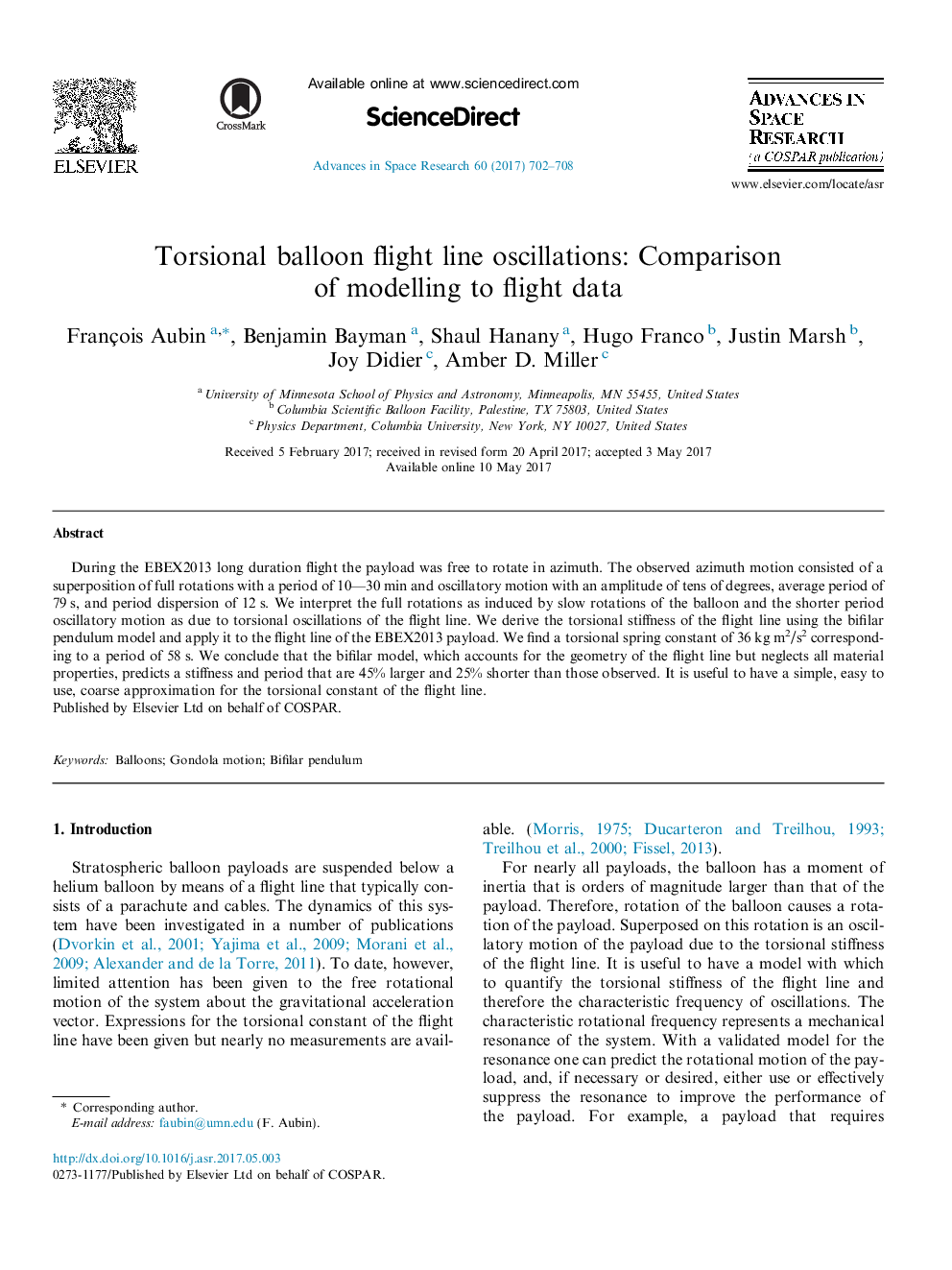| Article ID | Journal | Published Year | Pages | File Type |
|---|---|---|---|---|
| 5486475 | Advances in Space Research | 2017 | 7 Pages |
Abstract
During the EBEX2013 long duration flight the payload was free to rotate in azimuth. The observed azimuth motion consisted of a superposition of full rotations with a period of 10-30 min and oscillatory motion with an amplitude of tens of degrees, average period of 79 s, and period dispersion of 12 s. We interpret the full rotations as induced by slow rotations of the balloon and the shorter period oscillatory motion as due to torsional oscillations of the flight line. We derive the torsional stiffness of the flight line using the bifilar pendulum model and apply it to the flight line of the EBEX2013 payload. We find a torsional spring constant of 36 kg m2/s2 corresponding to a period of 58 s. We conclude that the bifilar model, which accounts for the geometry of the flight line but neglects all material properties, predicts a stiffness and period that are 45% larger and 25% shorter than those observed. It is useful to have a simple, easy to use, coarse approximation for the torsional constant of the flight line.
Keywords
Related Topics
Physical Sciences and Engineering
Earth and Planetary Sciences
Space and Planetary Science
Authors
François Aubin, Benjamin Bayman, Shaul Hanany, Hugo Franco, Justin Marsh, Joy Didier, Amber D. Miller,
